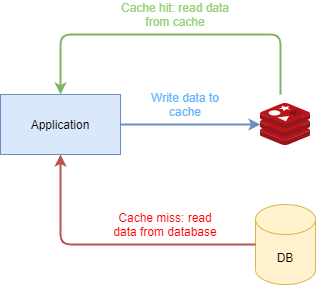- Published on
Redis Caching Strategies A Comprehensive Guide for Developers
- Authors

- Name
- Adil ABBADI
Introduction
Redis is one of the most popular in-memory key-value stores, widely adopted for high-performance caching solutions. Its simplicity, speed, and versatility make it an indispensable tool for developers seeking to reduce database load and accelerate response times. In this article, we'll explore essential Redis caching strategies, walk through practical examples, and share best practices for optimal results.

- Choosing the Right Caching Strategy
- Advanced Strategies: LFU, LRU, and Beyond
- Distributed and Scalable Caching
- Conclusion
- Ready to Supercharge Your App?
Choosing the Right Caching Strategy
Selecting an appropriate caching strategy depends on your application's read/write patterns, data consistency requirements, and scalability goals. Here are three foundational approaches:
1. Cache-Aside (Lazy Loading)
Cache-Aside, or Lazy Loading, is the most common pattern: the application checks the cache first, then loads data from the database if missing and stores the result back into the cache.
def get_user(user_id):
cached_user = redis_client.get(f"user:{user_id}")
if cached_user:
return json.loads(cached_user)
user = db.query_user(user_id)
redis_client.setex(f"user:{user_id}", 3600, json.dumps(user)) # cache for 1 hour
return user
Pros:
- Simple to implement
- Ensures cache only stores actively accessed data
Cons:
- Can suffer from cache misses on cold start or infrequently accessed data

2. Write-Through Caching
Write-Through keeps the cache always up to date: when data is written, it’s stored both in Redis and the database simultaneously, ensuring consistency.
def create_user(user_id, user_data):
db.insert_user(user_id, user_data)
redis_client.set(f"user:{user_id}", json.dumps(user_data))
Pros:
- Cache never gets stale
- Simple reads from cache
Cons:
- Write latency increases (affects write-heavy workloads)
- Potential risk if one write fails

3. Cache Invalidation Strategies
Maintaining cache consistency with the database is vital. Common invalidation strategies include:
- Time-based Expiry (TTL): Assigning a time-to-live to cache entries.
- Explicit Invalidation: Removing keys manually after a database change.
def update_user(user_id, new_data):
db.update_user(user_id, new_data)
redis_client.delete(f"user:{user_id}") # Invalidate cache on update
Tip: Experiment with TTL values to balance between data freshness and cache hit rate.

Advanced Strategies: LFU, LRU, and Beyond
Redis supports built-in eviction policies like Least Recently Used (LRU) and Least Frequently Used (LFU) to manage memory:
# In redis.conf or via redis-cli
maxmemory 256mb
maxmemory-policy allkeys-lru
Use these when your working set might exceed available memory, letting Redis automatically evict less relevant data.
Key Considerations:
- Tune
maxmemoryandmaxmemory-policyfor your workload - Monitor eviction metrics to prevent unexpected data loss
Distributed and Scalable Caching
As your system grows, distributing your cache helps prevent bottlenecks:
- Sharding: Partition keys across multiple Redis instances (“Redis Cluster”).
- Replication: Use Redis replicas to increase availability and read throughput.
# Example Redis Cluster configuration (redis.conf)
cluster-enabled yes
cluster-config-file nodes.conf
cluster-node-timeout 5000
Best Practices:
- Deploy Redis Sentinel for high availability
- Monitor latency and partition tolerance

Conclusion
Redis offers a rich set of caching strategies tailored to a variety of application needs. By understanding patterns like Cache-Aside, Write-Through, and appropriate invalidation techniques, you can drastically boost performance and scalability. Leverage advanced features and tune configurations for robust, production-ready caching solutions.
Ready to Supercharge Your App?
Experiment with these Redis caching strategies in your next project! Dive deeper into the Redis documentation, explore clustering and Sentinel for scale, and watch your application’s responsiveness soar. Happy caching!
